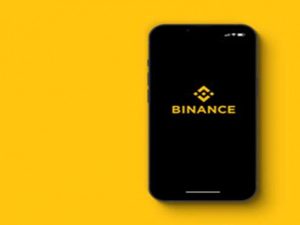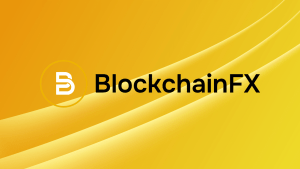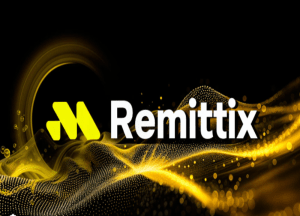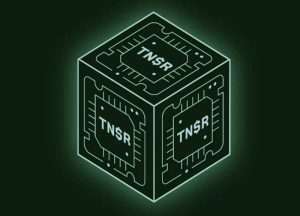What’s the Difference Between Web 3.0 and Metaverse?
The Internet is evolving — today’s version is very different from the slow, text-based version we thought of as a big bomb in the 1990s, and tomorrow’s Internet will be its own beast. If you’ve been paying attention to any prediction about the appearance and function of the Internet in the future, you’re likely to hear people talking about the words “Web 3.0” and “Metaverse”, but they’re not the same thing.Here are the differences between Web 3.0 and Metaverse and what they mean for your future on the Internet.

What is Web 3.0?
The central idea of Web 3.0 is that there has been a major shift in the way we use the Internet, from web 1.0 (yesterday’s Internet) to Web 2.0 (today’s Internet), so it helps define these generations.
Web 1.0 is an Internet version that existed from about 1991 to 2004. It is a place where you can get information, and the number of people who create content is dwarfed by the number of people who consume content.
Web2. 0 has defined the subsequent Internet version: a version dominated by user created content. At this time, we all began to interact through social media posts on Facebook, create and share videos on youtube, and leave comments. Well, everywhere.
Since at least 2006, people have been speculating about what Web 3.0 will look like. However, the version that has caused waves now is predicted by Gavin wood, the co creator of Ethereum blockchain, in 2014. He predicts that the future Internet will focus on — not surprisingly — blockchain technology.
If “blockchain” is another term you’ve heard of but don’t quite understand, the core idea of this technology is that data is decentralized – not stored on a central server owned by an entity, but a copy of information owned by an individual’s entire computer network.
When we look at this issue in the context of currency – especially cryptocurrency, the most common blockchain application – this is the difference between banks recording your account activity on their own servers and computer networks recording it on shared ledgers.
However, financial transactions are only an application of blockchain networks – they can be used as distributed storage of any type of data. If Web 3.0 develops in the way envisaged by its supporters, they will become the backbone of the Internet in the future.
Early Signs of Web 3.0
This actually means that instead of spending all our time on websites that own and monetize the content and data we create (Facebook, Google, etc.), we use social networks, search engines and other applications using blockchain to let us control these data.
We have also seen the elements of Web 3.0 appear.
These elements include unforgeable tokens (NFTs), which use blockchain technology to help artists profit and distribute their digital creations in new ways, and decentralized web browsers, which block advertising and allow users to choose which websites can access their browsing data.
What Does Metaverse Means?
Web 3.0 is mainly about who will own and control tomorrow’s Internet, and the core of Metaverse is how users will experience the future Internet.At present, most of us browse websites and applications through the screens of computers, smartphones and tablets. Supporters of Metaverse say that tomorrow we will use virtual reality (VR) technology to enter the Internet and move between virtual worlds in the form of digital avatars.
Each of these virtual worlds is a Metaverse. You can already explore several online, including rec room, fortnite, decentraland and horizon worlds, a virtual game world created by meta (the parent company of Facebook).Although today’s Metaverse is mostly a game platform composed of teenagers, if this concept takes off as supporters believe, it may change the way we all work, socialize and more online.For example, you can wear a VR helmet and talk to the avatar of your colleagues in virtual space instead of through video conference services such as zoom.
Instead of chatting with friends via text or Facebook Messenger, your team may agree to meet in the crowd of virtual music festivals, where real-life musicians perform as digital avatars.
Connection Between Web 3.0 and Metaverse
Although Metaverse and Web 3.0 are not the same thing, they are not competitive versions of the future Internet – one, two or both of them may be implemented, and there may be some overlap between the two.
For example, a digital artist can create a suit for an avatar, let him wear it in Metaverse, and then make money by auctioning it and NFT. This will give the buyer exclusive ownership of the suit – even if others copy it, their avatar is technically dressed in fake goods.
Metaverse Can Change the Way We Live
Another possibility is that we will eventually have a Web 3.0, which we experience through computers and smartphones rather than VR helmets, just like the Internet today.
If there are 1000 yuan of people in the computer industry who can’t support VR recently, it’s more likely that we will need 1000 yuan of hardware to improve the efficiency of the computer industry.
If metaverse is really implemented, it may be centralized (such as Web 2.0), decentralized (such as Web 3.0), or a mixture of the two. Facebook — the kind of centralized company that Web 3.0 aims to hinder — simply changed its name to “meta” to indicate that it intends to build Metaverse and make it profitable. But there are also Metaverses like decentraland, where everything is built and owned by users.
Assets sold in Metaverse may be created by digital artists. For them, the new Internet experience provides a way to finally make profits – or large companies like Nike and Gucci, who see Metaverse as another simple source of income.
Conclusion
Although we now see the shadow of Web 3.0 and Metaverse, neither of them can subvert today’s screen based Internet composed of competing (but centralized) enterprises. Some people say they will never.
Twitter founder Jack Dorsey believes that a more decentralized Internet will not necessarily increase the power of users as predicted by Web 3.0 supporters – it just takes this power away from major technology companies and puts it in the hands of venture capitalists investing in blockchain applications.”[Web 3.0] will never escape their inspiration,” he tweeted in December 2021. “It is ultimately a centralized entity with different labels.”
Tomorrow’s Internet is likely to be very similar to today’s Internet, but there are new elements from Web 3.0 and Metaverse.Even if we can overcome the technical barriers to creating Metaverse, people may just prefer to experience their Internet in the way they do today – as Elon Musk, CEO of Tesla and SpaceX, said bluntly in an interview with Babylon bee: “I don’t see anyone tying a damn screen to their face all day.”
The most likely scenario is that tomorrow’s Internet will be much like today’s centralized, screen based Internet, and new elements from Web 3.0 and Metaverse — now that you know the meaning of these terms, you can know what to expect.










